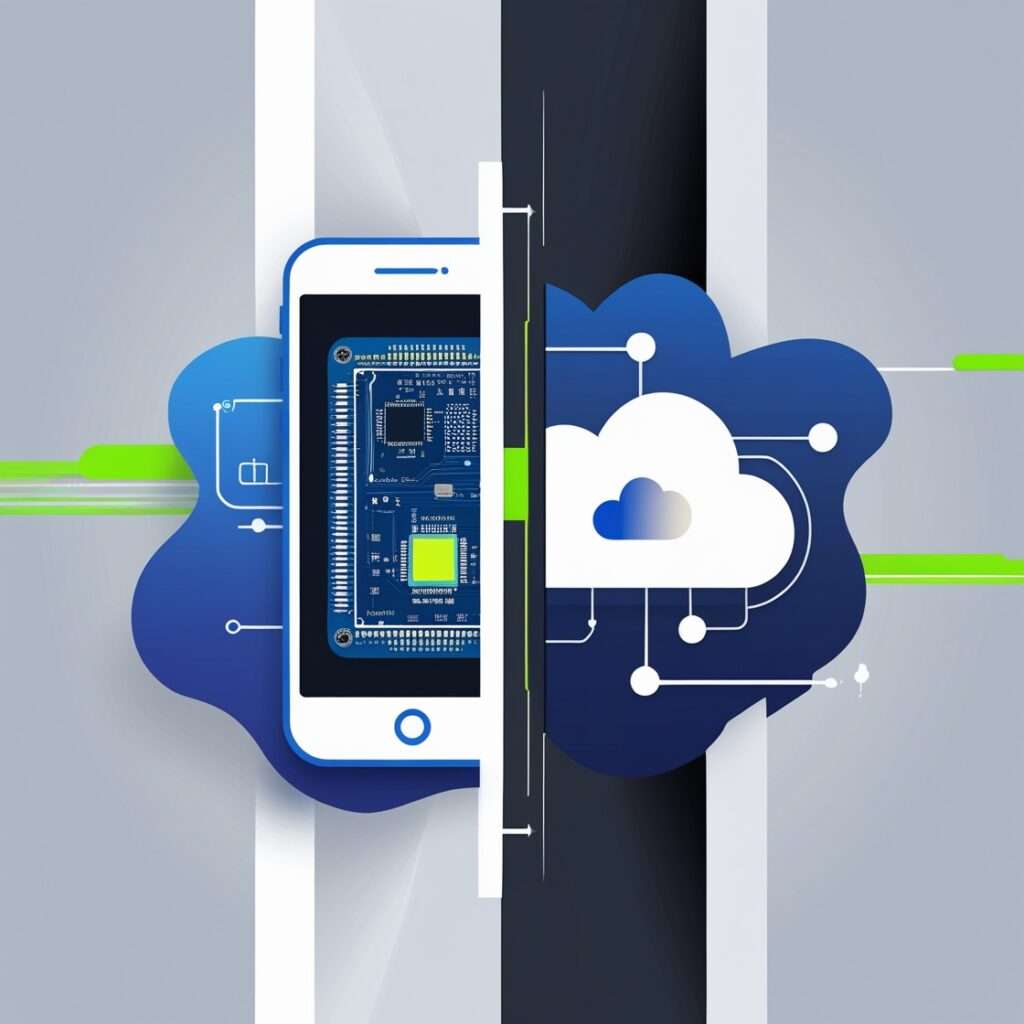Introduction: A New Era in Your Pocket
Back in the day, your smartphone was just a tool — a screen, a processor, and a connection to the cloud. But in 2025, your phone is no longer just a passive device. It thinks, learns, and acts — independently.
Welcome to the era of on-device AI — where artificial intelligence doesn’t live in distant servers, but in your phone itself.
Whether you’re using Samsung’s Gauss, Google’s Gemini Nano, or the latest Qualcomm Snapdragon AI Engine, chances are your phone already makes decisions, predicts behavior, and enhances performance without ever connecting to the cloud.
But what does this actually mean for you?
Let’s break it down.
What Is On-Device AI?
On-device AI, also called edge AI, means the intelligence runs locally, directly on the smartphone — not on a cloud server.
Think of it like this:
Traditional AI: Data sent to cloud, high latency, risk of data exposure, needs internet
On-Device AI: Data processed locally, instant response, data stays private, works offline
With powerful neural processors (NPUs), smartphones in 2025 can now run advanced models in real-time, on-device. That includes voice recognition, image processing, predictive behavior, and even full language models.
Real-Life Examples in 2025
Here’s how on-device AI is changing your smartphone experience today:
Smarter Cameras
Scene detection, HDR optimization, and night mode now happen in milliseconds. AI adjusts lens, exposure, and filters based on the scene before you click — no lag.
Voice Assistants Without Internet
Assistants like Google Assistant, Bixby, and even Siri can now operate offline for many tasks (e.g., setting alarms, sending messages).
AI-Powered Privacy
Your phone can detect and block suspicious behavior locally. Samsung’s Knox AI or Apple’s Private Relay use AI to monitor threats without sending data to external servers.
Battery & Performance Optimization
Phones learn your behavior: when you wake up, what apps you use, when you sleep — and optimize background processes accordingly.
Accessibility & Personalization
On-device models help with live captioning, gesture recognition, and eye tracking — critical for inclusive design.
Major Players Leading the Way
Samsung – Gauss AI
Samsung’s Gauss (announced late 2024) is now integrated into Galaxy S25+ and Fold6. It handles text generation, summarization, and real-time voice translation without cloud dependency.
Google – Gemini Nano
Used in Pixel 9 and 9 Pro, Gemini Nano enables offline smart replies, on-screen summarization, and real-time translation. It’s extremely power-efficient and privacy-focused.
Apple – On-Device Learning
Apple keeps refining its Neural Engine, now in A18 and M3 chips, for photo editing, FaceID, and health tracking — all privately done on-device.
Qualcomm – Snapdragon AI
Snapdragon 8 Gen 3 features multi-modal AI (text, image, sound) with over 45 TOPS (trillions of operations per second).
Why Privacy Is the Game-Changer
In a world plagued by data breaches, privacy is currency.
With on-device AI:
- Your photos never leave your phone to get processed.
- Your voice commands are not recorded externally.
- Personal habits stay… personal.
This is why governments and industries are pushing for edge computing — it limits legal exposure, ensures compliance (like GDPR), and builds user trust.
And you? You gain speed, privacy, and control.
What It Means for App Developers
Developers now have to build AI-first apps that don’t just rely on internet connection.
Google’s Android ML Kit, Apple’s Core ML, and open libraries like TensorFlow Lite make it easier to run AI models on phones with limited power.
Apps that offer:
- Offline AI features
- Personalized experiences
- Smart energy management
…will dominate app stores in 2025.
Challenges Still Ahead
While on-device AI is powerful, it’s not perfect yet.
- Storage & Power:
AI models still require space and energy — balance is key. - Model Size:
Some advanced models (like GPT-4 or Claude) are still too big to run locally. - Developer Adoption:
Many developers still rely on cloud APIs because of cost and time.
But the trend is clear — we’re shrinking the AI brain to fit your palm.
What’s Next? The AI Phone Arms Race
In 2025 and beyond, expect:
- Hybrid AI Models: Split tasks between device and cloud for efficiency.
- AI App Stores: Entire platforms dedicated to AI-based offline tools.
- User-Customizable AI: Tailor your AI assistant to your personality.
Imagine a phone that rewrites your emails like you would, or edits your videos in your style — on the spot, no upload needed.
How You Can Benefit (As a User)
Here’s how you can make the most of on-device AI:
- Keep your phone updated – Firmware often contains AI model improvements.
- Use AI-powered features – Don’t disable “smart features” — they’re working for you.
- Explore offline tools – Look for apps that work even without data.
- Control your privacy – Check AI permissions under system settings.
External Sources (for SEO & Credibility):
- Samsung Gauss AI Overview: https://news.samsung.com/global
- Google Gemini Nano Details: https://blog.google/products/android/gemini-ai/
- Qualcomm Snapdragon AI Tech: https://www.qualcomm.com/products/snapdragon
- Apple Neural Engine: https://developer.apple.com/machine-learning/
Conclusion: Your Pocket, Smarter Than Ever
On-device AI isn’t just a buzzword — it’s a revolution in how smartphones operate. It means better performance, more privacy, and smarter tools at your fingertips, even when you’re offline.
In 2025, your phone doesn’t just run apps — it understands you.
The intelligence is no longer in the cloud. It’s in your pocket. And it’s getting smarter.
- Global Demand for Technology Professionals: Skills, Roles, Job Openings & Future Trends
- Fix ANR on Android: A Complete Guide to Understanding, Diagnosing, and Preventing Application Not Responding Errors
- How to Optimize a PC for Gaming: My Personal Journey with an IdeaPad 3
- AI Fitness Training: How AI in Fitness Training Helped Me Challenge My Students
- iPhone 17 Launch Event, Samsung’s Bright Future, and Key Reviews



